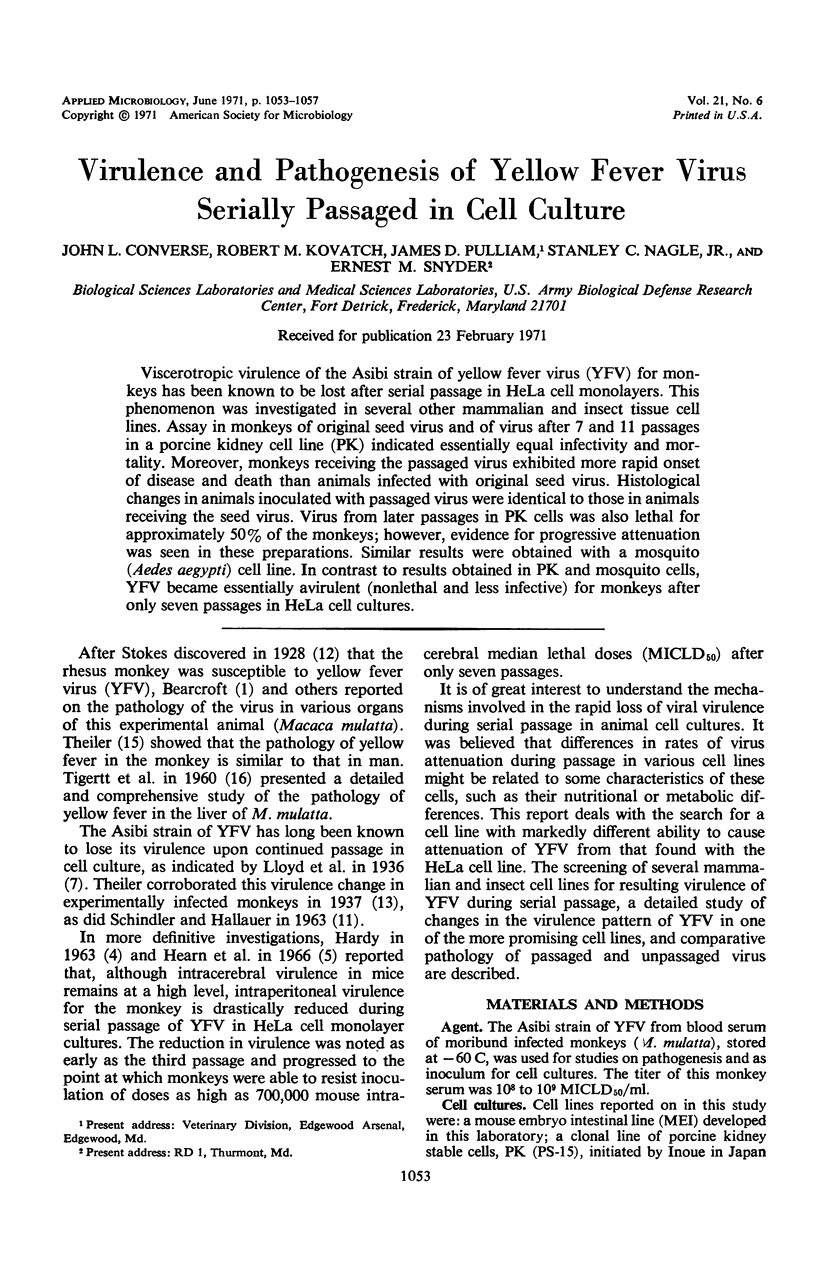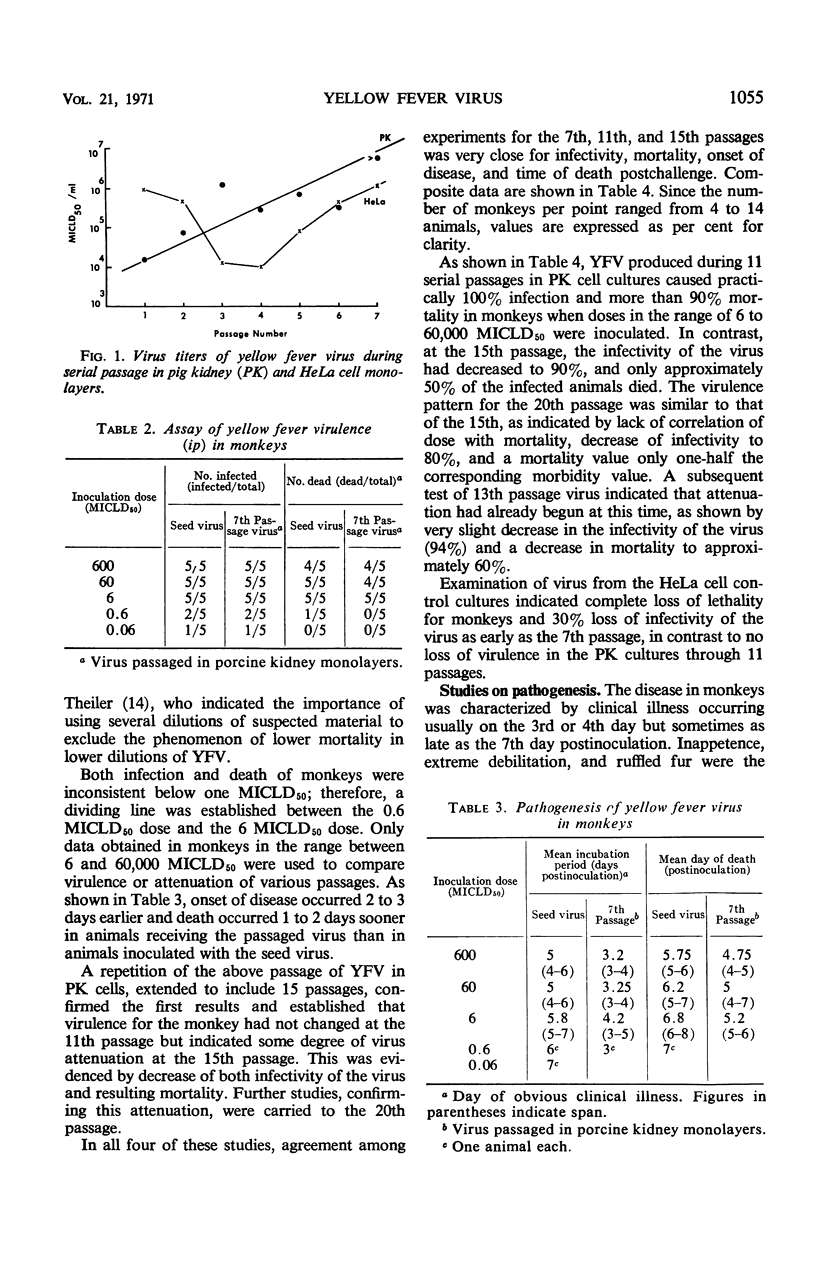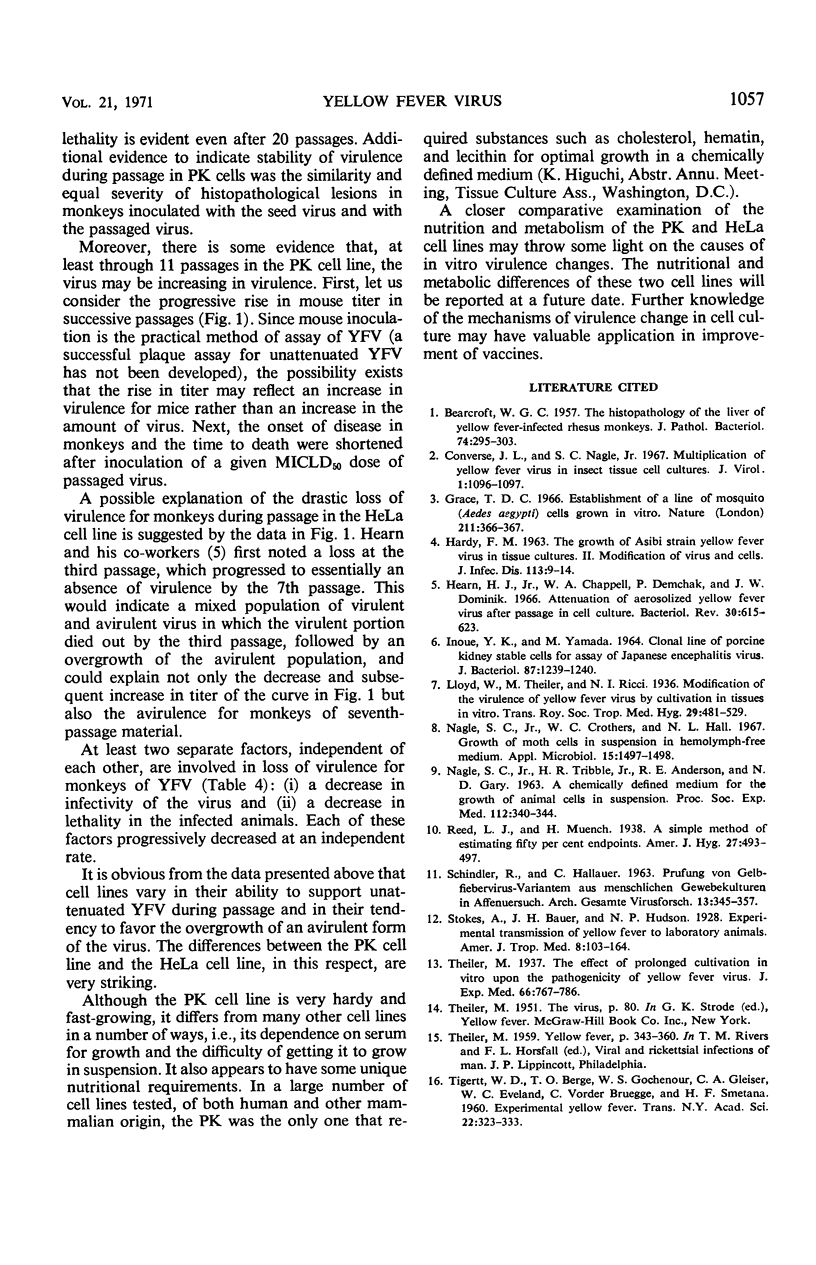Abstract
Viscerotropic virulence of the Asibi strain of yellow fever virus (YFV) for monkeys has been known to be lost after serial passage in HeLa cell monolayers. This phenomenon was investigated in several other mammalian and insect tissue cell lines. Assay in monkeys of original seed virus and of virus after 7 and 11 passages in a porcine kidney cell line (PK) indicated essentially equal infectivity and mortality. Moreover, monkeys receiving the passaged virus exhibited more rapid onset of disease and death than animals infected with original seed virus. Histological changes in animals inoculated with passaged virus were identical to those in animals receiving the seed virus. Virus from later passages in PK cells was also lethal for approximately 50% of the monkeys; however, evidence for progressive attenuation was seen in these preparations. Similar results were obtained with a mosquito (Aedes aegypti) cell line. In contrast to results obtained in PK and mosquito cells, YFV became essentially avirulent (nonlethal and less infective) for monkeys after only seven passages in HeLa cell cultures.
Full text
PDF




Selected References
These references are in PubMed. This may not be the complete list of references from this article.
- Converse J. L., Nagle S. C., Jr Multiplication of yellow fever virus in insect tissue cell cultures. J Virol. 1967 Oct;1(5):1096–1097. doi: 10.21236/ad0820847. [DOI] [PMC free article] [PubMed] [Google Scholar]
- Grace T. D. Establishment of a line of mosquito (Aedes aegypti L.) cells grown in vitro. Nature. 1966 Jul 23;211(5047):366–367. doi: 10.1038/211366a0. [DOI] [PubMed] [Google Scholar]
- HARDY F. M. THE GROWTH OF ASIBI STRAIN YELLOW FEVER VIRUS IN TISSUE CULTURES. II. MODIFICATION OF VIRUS AND CELLS. J Infect Dis. 1963 Jul-Aug;113:9–14. doi: 10.1093/infdis/113.1.9. [DOI] [PubMed] [Google Scholar]
- Hearn H. J., Jr, Chappell W. A., Demchak P., Kominik J. W. Attenuation of aerosolized yellow fever virus after passage in cell culture. Bacteriol Rev. 1966 Sep;30(3):615–623. doi: 10.1128/br.30.3.615-623.1966. [DOI] [PMC free article] [PubMed] [Google Scholar]
- Inoue Y. K., Yamada M. A. Clonal line of porcine kidney stable cells for assay of Japanese encephalitis virus. J Bacteriol. 1964 May;87(5):1239–1240. doi: 10.1128/jb.87.5.1239-1240.1964. [DOI] [PMC free article] [PubMed] [Google Scholar]
- NAGLE S. C., Jr, TRIBBLE H. R., Jr, ANDERSON R. E., GARY N. D. A chemically defined medium for growth of animal cells in suspension. Proc Soc Exp Biol Med. 1963 Feb;112:340–344. doi: 10.3181/00379727-112-28038. [DOI] [PubMed] [Google Scholar]
- Nagle S. C., Crothers W. C., Hall N. L. Growth of Moth Cells in Suspension in Hemolymph-free Medium. Appl Microbiol. 1967 Nov;15(6):1497–1498. doi: 10.1128/am.15.6.1497-1498.1967. [DOI] [PMC free article] [PubMed] [Google Scholar]
- SCHINDLER R., HALLAUER C. PRUEFUNG VON GELBFIEBERVIRUS-VARIANTEN AUS MENSCHLICHEN GEWEBEKULTUREN IM AFFENVERSUCH. Arch Gesamte Virusforsch. 1963 May 20;13:345–357. [PubMed] [Google Scholar]


